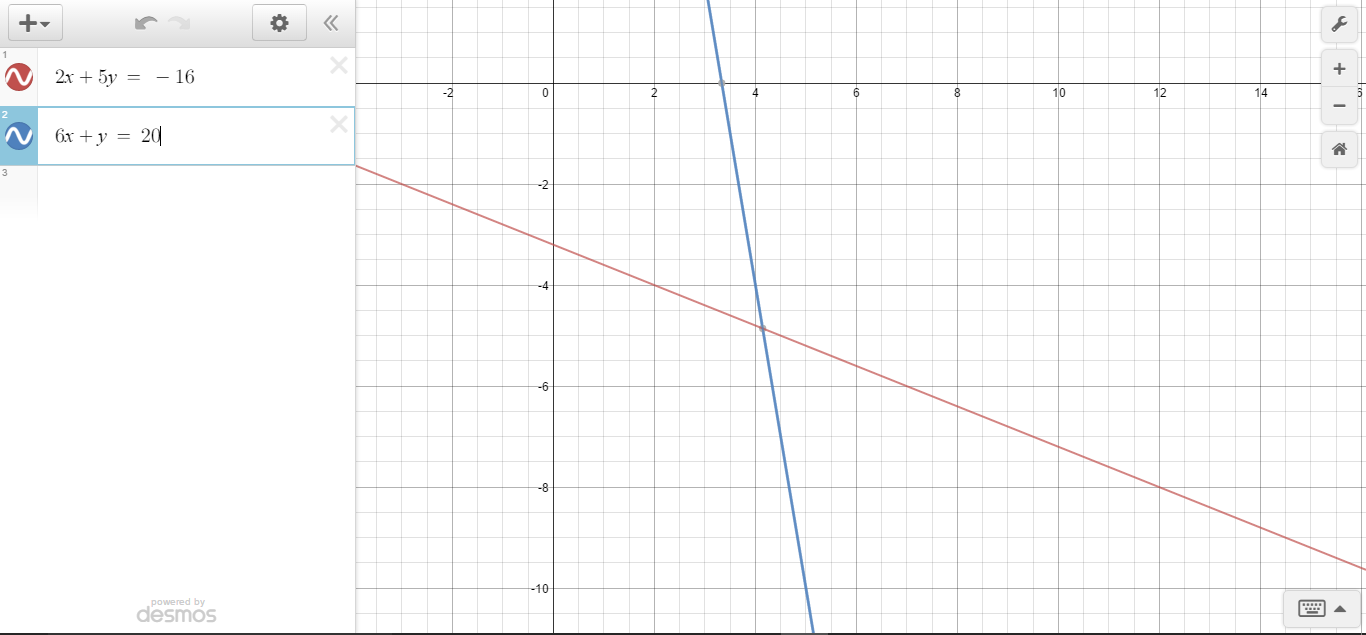How do you determine whether a linear system has one solution, many solutions, or no solution when given 2x+5y=-16 and 6x+y=20?
1 Answer
A linear system has one solution when the two lines comprising the system intersect once. A linear system has many (infinite) solutions when the two lines are the same (such as
Explanation:
Here we have the system
To determine the nature of the solutions (whether we have 0, 1, or infinitely many), we put each equation into the form
We see that our slope,
This time, our slope is

Graph from desmos.com/calculator.

